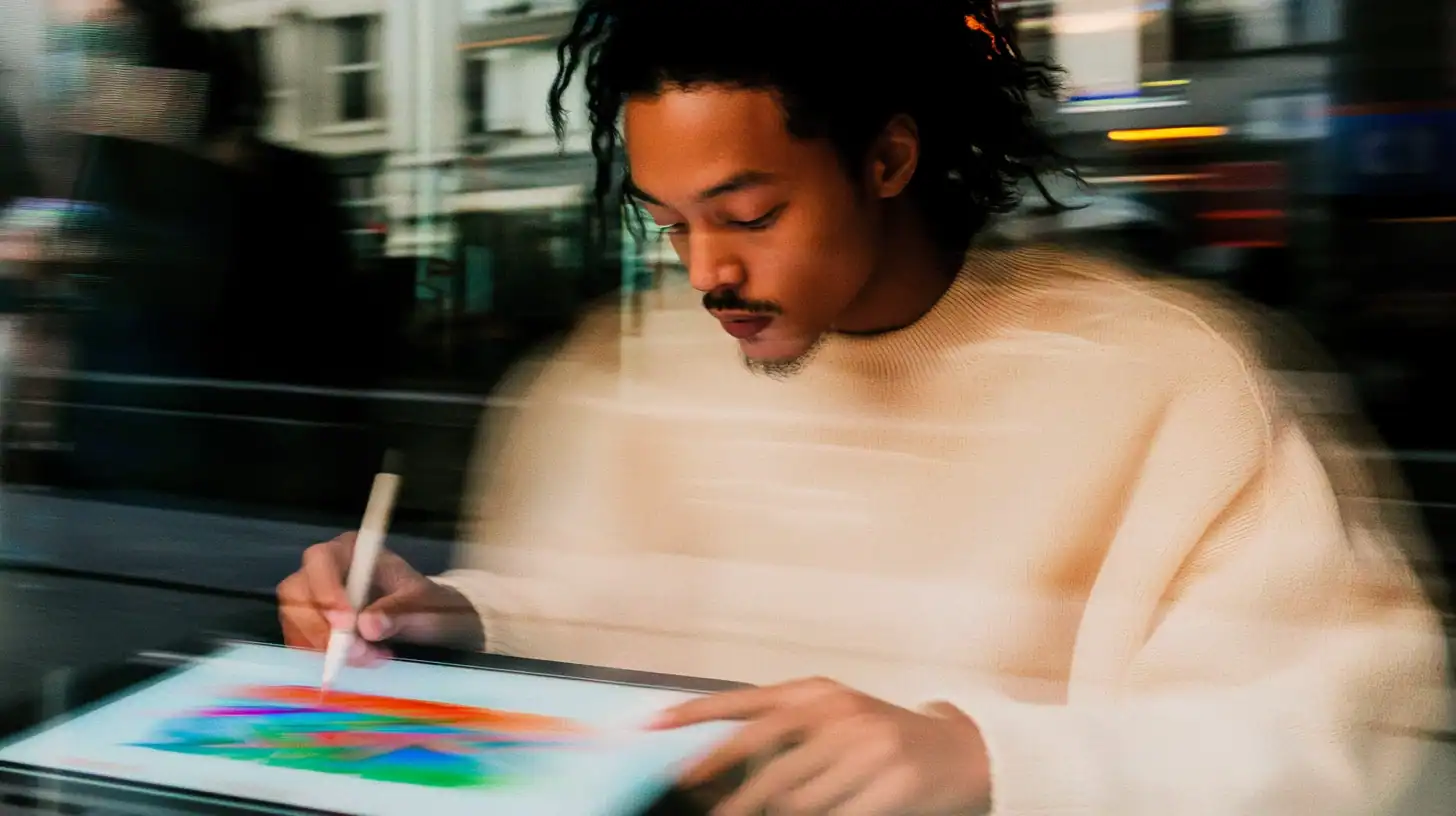Introducing the Founderz Fellows: our first AI-powered mentors
At Founderz, we believe that online education should be personalized. That's why we've created Fellows, virtual AI mentors who accompany students in real time.

For years, graphic design has been a territory dominated by intuition, human talent, and the ability to visually communicate complex ideas. However, the arrival of artificial intelligence in graphic design has changed the game.
What once required hours of sketches, adjustments, or color testing, can now be done in minutes with tools powered by algorithms capable of learning from the creative process itself.
But beyond the technical impact, AI in graphic design raises an interesting question: Are we facing a threat to creativity or a new way to enhance it?
When we talk about AI in graphic design, we’re not simply referring to programs that “do the work for us.” What’s really happening is a collaboration between human and machine. AI has become a creative assistant, capable of suggesting color combinations, generating original fonts, or even creating images from scratch based on a textual concept.
Tools like Adobe Firefly, Midjourney, or DALL-E 3 have shown that AI for graphic design can be a constant source of inspiration. It’s no longer just about automating tasks, but about expanding the creative horizon.
For example, a designer can generate several versions of a poster in a matter of seconds and then refine the details with their personal touch. This synergy between technology and creativity is redefining how the design process is conceived.
One of the greatest benefits of AI in graphic design is the elimination of routine tasks. Resizing, background cleaning, vectorization, or color palette selection can now be automated with great precision. This frees up time for what really matters: conceptual creativity.
Instead of spending hours on execution, professionals can focus on the message, emotion, or visual narrative. That is, on what makes the design unique.
Artificial intelligence has also opened the door to an unprecedented level of personalization. Thanks to data analysis, designers can better understand which styles or compositions work for different audiences.
For example, a brand can generate hundreds of versions of the same campaign tailored to different regions, ages, or interests. What was once unthinkable due to time and budget constraints is now a reality accessible even to small creative teams.
This is one of the most frequently asked, and also one of the most misframed, questions. AI for graphic design does not aim to replace professionals, but to enhance their capabilities.
Just as photography didn’t eliminate painting or computers didn’t replace pencils, AI simply becomes a new tool in the designer’s arsenal. The important thing isn’t mastering the technology, but knowing how to interpret it.
And it makes sense: empathy, aesthetic sensitivity, and narrative ability are still deeply human attributes.
More and more design studios are using artificial intelligence in graphic design to generate complete visual systems. From choosing complementary fonts to creating dynamic logos, AI allows for rapid prototyping of identities while maintaining strong visual consistency.
Another great advantage is the generation of visual ideas. By simply entering a description, AI can create multiple versions of the same concept. This allows designers to explore paths they may not have considered traditionally. Instead of limiting creativity, AI amplifies it.
The rise of AI in graphic design is also generating new professional profiles. Future designers will not only need to understand composition, color, or typography but also prompts, machine learning, and digital ethics.
In fact, many companies are already seeking professionals capable of combining artistic sensitivity with technological vision. Knowing how to interact with an AI tool, understanding its biases, or adjusting its results is now part of the job.
This is where training plays a key role. Programs like the AI & Innovation from Founderz show how artificial intelligence is transforming the creative field. If you’re interested in learning how to apply AI in a practical and creative way, this training could be an excellent starting point.
Although the benefits are clear, important issues arise. One of the biggest challenges is authorship: if an image is generated by a model trained with millions of works, who does it really belong to?
Another delicate aspect is the responsible use of data. Some tools use existing images to learn visual patterns, which may raise copyright issues. Therefore, it is essential that design professionals adopt a critical stance and understand the ethical implications of the technology they use.
Additionally, there’s the risk of visual homogenization. If all designers use the same models or prompts, the results could start to look too similar. That’s why the difference will still lie in the human perspective: how we interpret, mix, and reimagine what AI offers us.
What’s happening with AI in graphic design is comparable to the digital revolution of the 2000s. Editing programs transformed the craft, but they never eliminated the designer’s role. The same will happen now: those who embrace this technology will have a clear competitive advantage.
The future of design won’t just be about aesthetics, but also intelligence, strategy, and adaptability. And in that context, AI is not a substitute, but a traveling companion that can help us explore visual terrain that once seemed unreachable.
Artificial intelligence has arrived to stay, and understanding it is essential for any creative professional. If you want to take a step further and learn how to apply these technologies in an ethical, strategic, and real way, we recommend exploring the educational offerings of Founderz.
Because understanding AI is no longer an option: it’s part of the professional future. And the best time to start learning is today.
AI in graphic design doesn’t eliminate human creativity; it enhances it. It allows us to imagine more, test more, and go further. And while algorithms are powerful, it’s still the designer’s eye, mind, and heart that give meaning to every image.